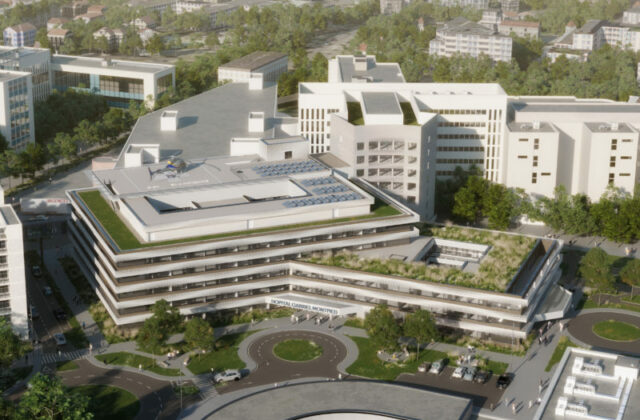
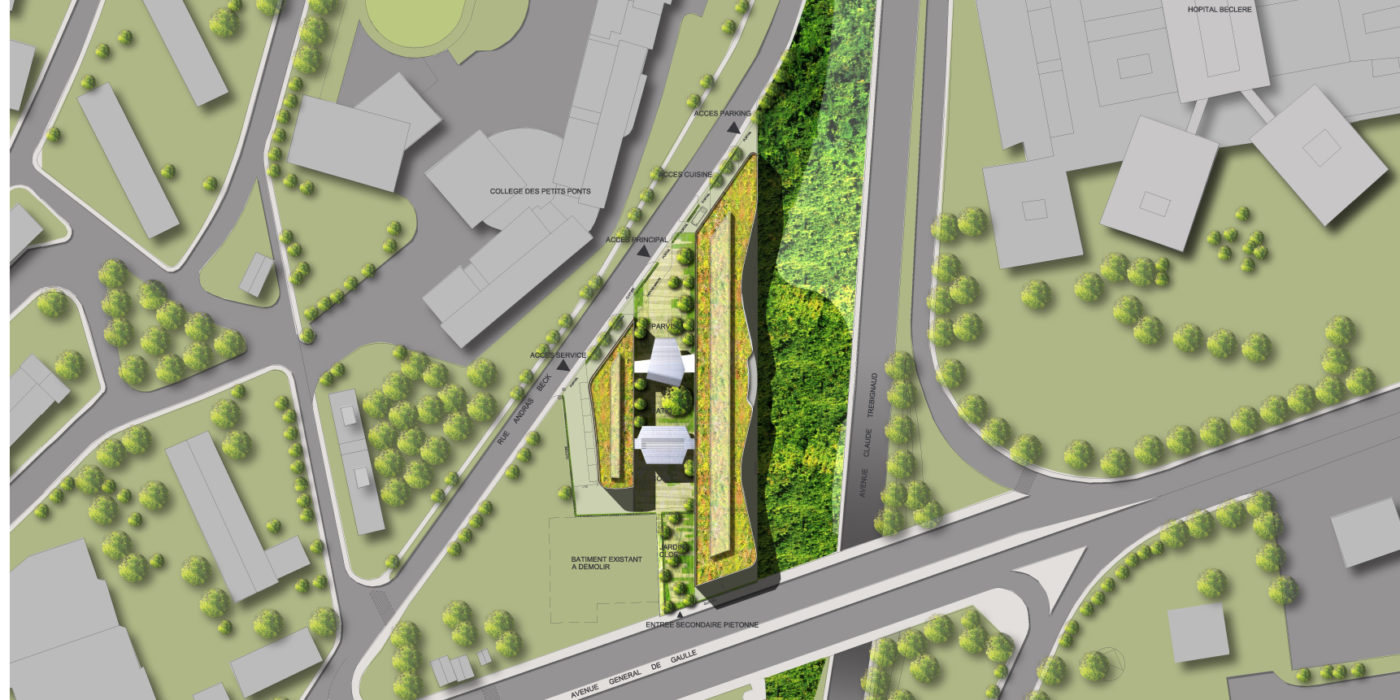
Designed like a rolling sea-cliff around a central garden, the Intersectional Clinic of Clamart brings nature into the core of the building and the process of support of psychiatric care.

The building of the Clamart Intersectional Clinic is located on a triangular island bordered by several main thoroughfares. Although the clinic is a branch of the Paul Guiraud Hospital Group (GHPG) of Villejuif, it is located outside the campus and integrates into the urban fabric typical of Paris suburbs. The project thus affirms its mission to integrate this space intended for
the treatment of patients with psychiatric disorders into the city. While providing the optimal treatment conditions for all, the clinic must also re-brand the image of psychiatry in line with the major changes in therapies, and promote a new synergy between the city and the institutions of psychiatric care.
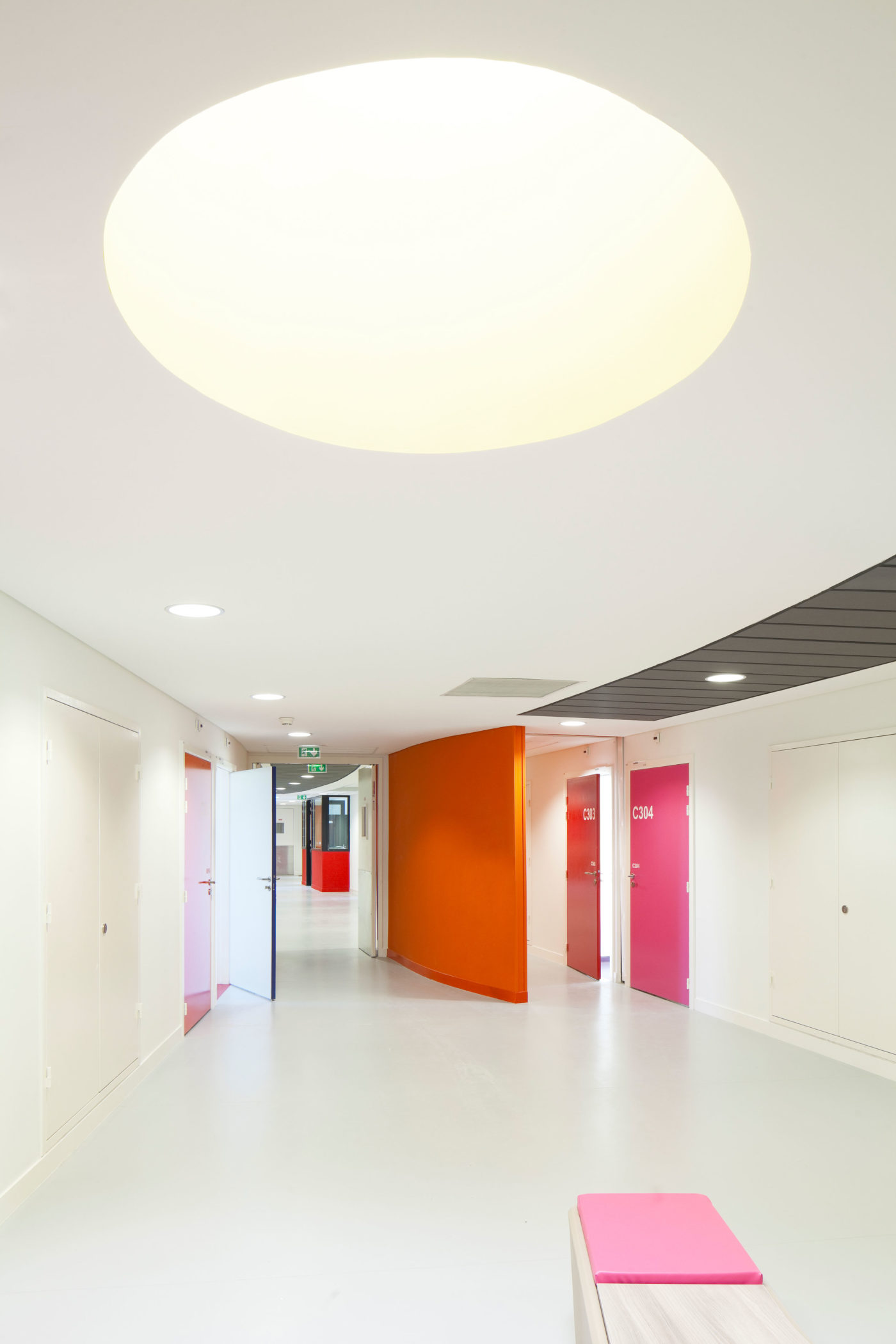
The building is structured to form two parallel wings located on either of a central garden and interconnected by two pavilions. This layout defines the general structure of the clinic, which accommodates the in-patient units in the main wing. The administrative offices are located in the small wing. The two central pavilions mark the reception units and the patient flows to each of the departments. This design “floods” the building in natural light, providing reference “daylight” to all the types of traffic and offers the rooms the advantage of multiple orientations.
The receding part of the building along Avenue de Trébignaud borders on a green lane, next to which the main wing rises like a wavy cliff, echoing the shapes of the topography. The waving design is used to advantage to accommodate balconies and semi-open spaces facing the greenery.
The two external façades form a terracotta sinusoid, like a scarf wrapped around the clinic. At the core of the building, the two parallel façades, covered with wood resin panels, cut off sharply the momentum of these curves. The pavilions are designed to suggest sculptures of rocks suspended in a vegetal strip of healing objects. These different green environments promote the healing process by underlining the circadian perception of time and the seasonal patterns.
This project is an opportunity to show that psychiatric care facilities can be a bridge between therapeutic isolation and openness to the world.
- Customer:Paul Guiraud Public Health Establishment
- Team:Architecturestudio, Arcoba, Eco Cités, Babylone, Acoustique Vivié & Associés
- Program:Clinic
- Year:1992
- Surface:10,600 m²
- Cost:20,000,000 €
- Status:2012
Similar programs
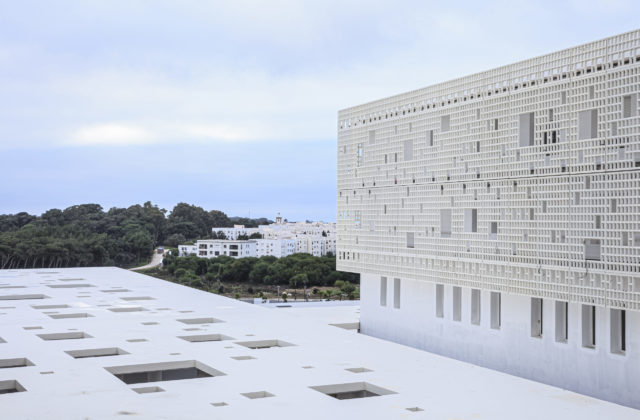
University Hospital in Tangier, Tangier, Morocco
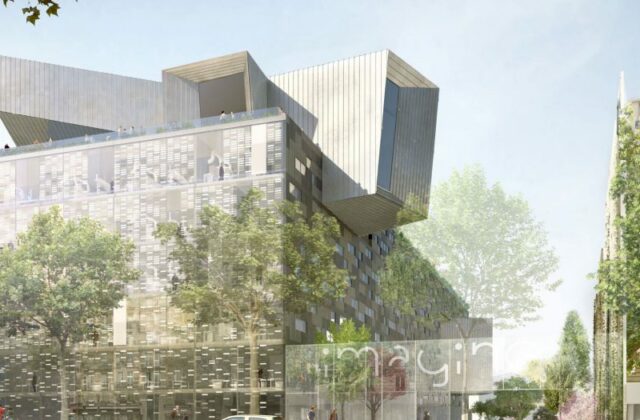
Institut de recherche et de soins dédiés aux maladies génétiques de l’enfant, Paris, France

Hospital extension, Sion, Switzerland

Centre Hospitalier Universitaire de Cologne, Cologne, Allemagne

Anne de Gaulle Foundation, Montigny-le-Bretonneux, France
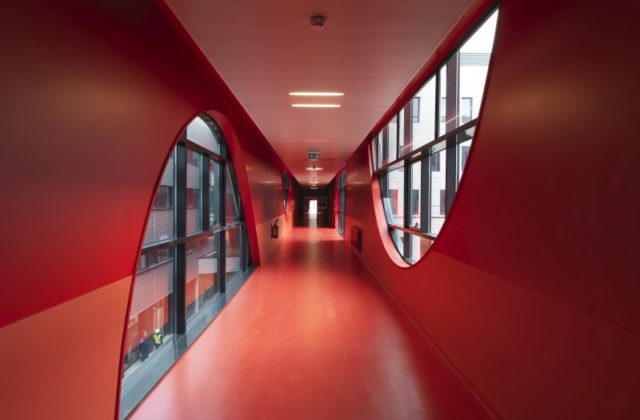
Caen University Hospital Centre, Caen, France

Cabinet médical, Lagny-sur-Marne, France

Faire Faces Institute, Amiens, France
